Whether you’re firing up the grill for a backyard bash or whipping up a quick weekday meal, hot dogs are the ultimate crowd-pleaser—nostalgic, easy, and endlessly customizable. But behind that humble bun lies a surprising truth: the difference between a jaw-dropping, juicy dog and a sad, split mess often comes down to technique. If you’ve ever wondered why some hot dogs have that perfect snap and smoky flavor while others turn out rubbery or bland, you’re not alone.
In this guide, we’re diving deep into the art of cooking hot dogs to perfection. From gentle simmering that locks in juices to spiral cuts that crank up flavor absorption, we’ll explore six foolproof techniques that take your dogs from average to absolutely unforgettable. These methods aren’t just for foodies either—whether you’re a grill master, a busy parent, or just someone craving a better bite, there’s a technique here that fits your time, tools, and taste.
But we’re not stopping at the “dos.” Even more important are the common cooking mistakes that sabotage your hot dog dreams. Ever tossed a dog straight in the microwave only to end up with a rubbery mess? Or boiled them into a soggy, split disaster? These kitchen crimes are all too common—and totally avoidable once you know what to look out for.
So before you settle for another lackluster hot dog, let this article guide you to bun-worthy brilliance. We’re serving up six winning techniques and five pitfalls to avoid at all costs—because everyone deserves a hot dog that’s hot, juicy, and downright delicious.
Whether you’re prepping for a picnic, tailgate, or Tuesday night dinner, get ready to become the hot dog hero your grill (and guests) deserve.
1. Gentle Simmering for Juicy Results
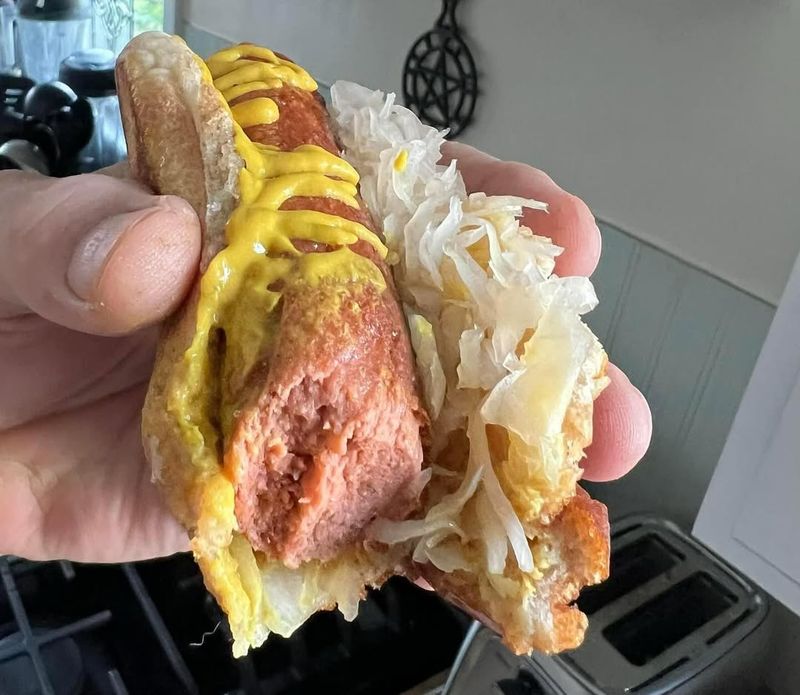
Simmering hot dogs in water maintains their moisture and creates a plump, juicy texture without sacrificing flavor. Fill a pot with enough water to cover your dogs, but don’t boil it aggressively – aim for a gentle simmer around 170°F.
Add your hot dogs and let them heat for about 5-7 minutes until they plump up nicely. This method prevents the casing from splitting while allowing the flavors to develop evenly throughout.
For an extra flavor boost, try simmering in beer or adding spices like garlic, onion powder, or a bay leaf to the water. This technique works wonderfully for both beef and pork varieties.
2. Grilling for Smoky Perfection
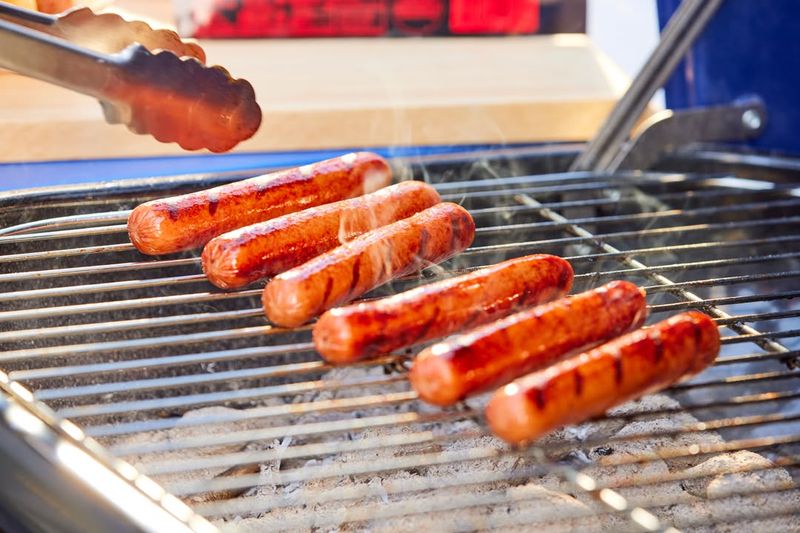
Nothing beats the smoky char of a properly grilled hot dog. Start with a medium-hot grill – you should be able to hold your hand above it for about 4-5 seconds. Place your dogs perpendicular to the grates to prevent them from falling through.
Rotate them every minute or so to ensure even cooking and those beautiful grill marks. Listen for the sizzle – that’s the sound of flavor developing! The entire process should take about 5-7 minutes.
The slight char from grilling adds a depth of flavor that complements the savory meat perfectly. Remember to warm your buns on the cooler part of the grill for the ultimate experience.
3. Pan-Frying for a Crispy Exterior
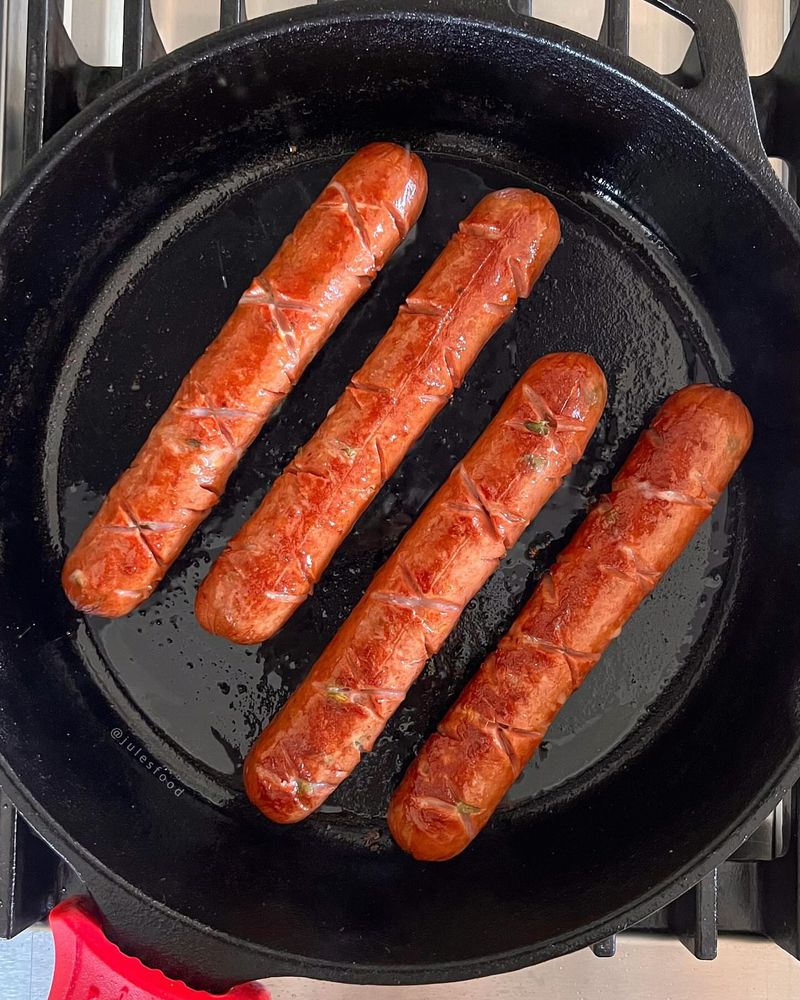
Cast iron skillets create magic with hot dogs! Heat your pan over medium heat and add just a touch of oil – the dogs will release their own fat as they cook. The direct contact with the hot surface creates a beautiful caramelization that’s hard to achieve with other methods.
Roll them frequently for even browning on all sides. You’ll know they’re done when the exterior develops a deep reddish-brown color and slight crispness, usually after about 5 minutes.
This method works wonderfully for both skinless and natural casing hot dogs, though the natural casing ones will develop an extra satisfying snap when you bite into them. The contrast between crispy exterior and juicy interior is simply unbeatable!
4. Spiral-Cutting for Maximum Flavor Absorption
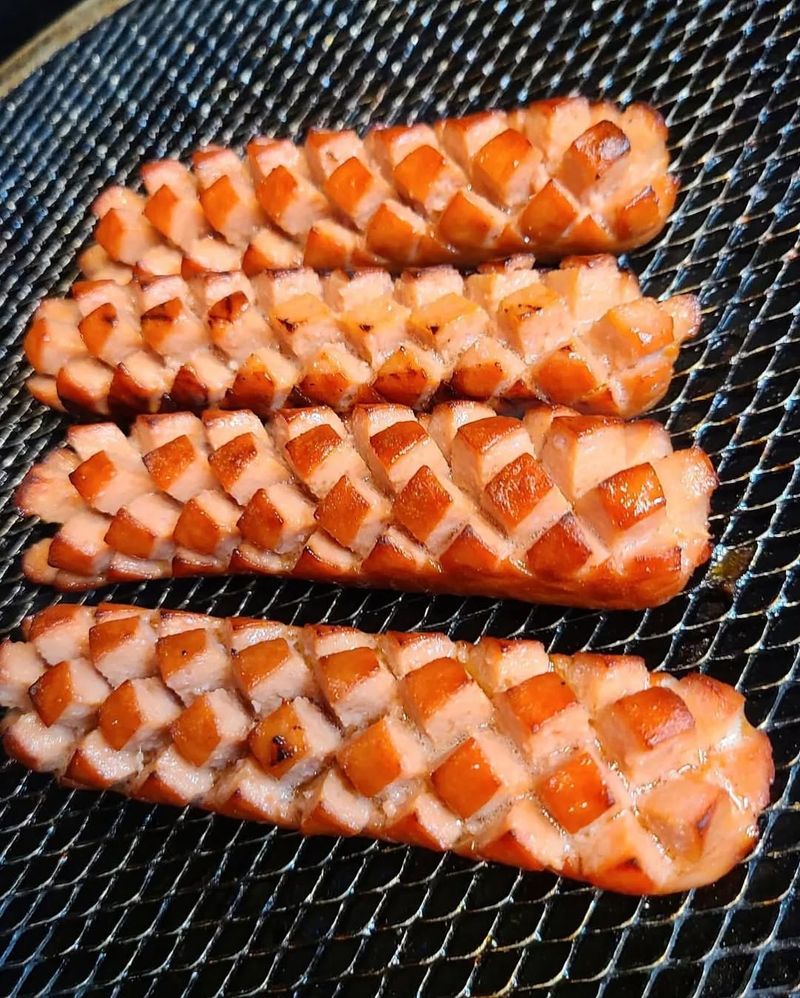
Spiral-cutting transforms an ordinary hot dog into an extraordinary eating experience. Take a skewer and insert it lengthwise through the center of your dog. Then, using a sharp knife, cut at a slight angle while rotating the hot dog, creating a continuous spiral from end to end.
When cooked, the hot dog curls open, creating more surface area for caramelization and flavor development. The spiral grooves also catch condiments perfectly, ensuring every bite has the ideal balance of toppings.
This technique works especially well on the grill or in a pan, where the edges get crispy while the interior stays juicy. Kids particularly love the fun, springy appearance of spiral-cut dogs!
5. Butter-Basting for Rich Flavor
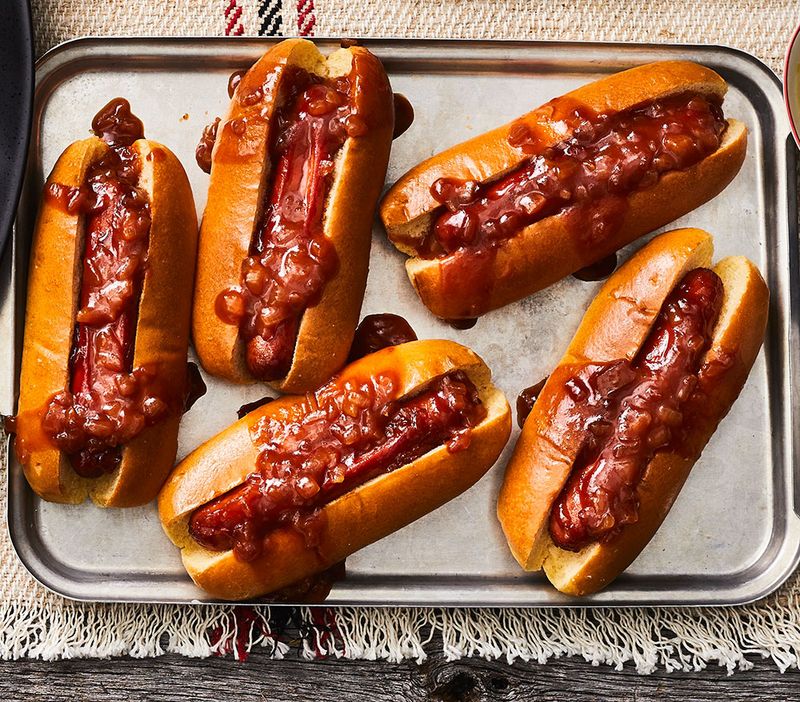
Butter-basting elevates hot dogs from simple to gourmet with minimal effort. Melt a tablespoon of butter in a skillet over medium heat, then add your hot dogs. As they cook, continuously spoon the melting butter over them, creating a rich, glossy exterior.
The butter browns slightly as it cooks, developing nutty notes that complement the savory meat perfectly. This technique takes about 5 minutes and works best with a small amount of butter – you don’t need much!
For an extra flavor boost, add minced garlic or herbs to the butter. The result is a hot dog with incredible depth of flavor and a beautiful shine that makes store-bought dogs taste homemade. Your guests will definitely notice the difference!
6. Sous Vide for Perfect Temperature Control
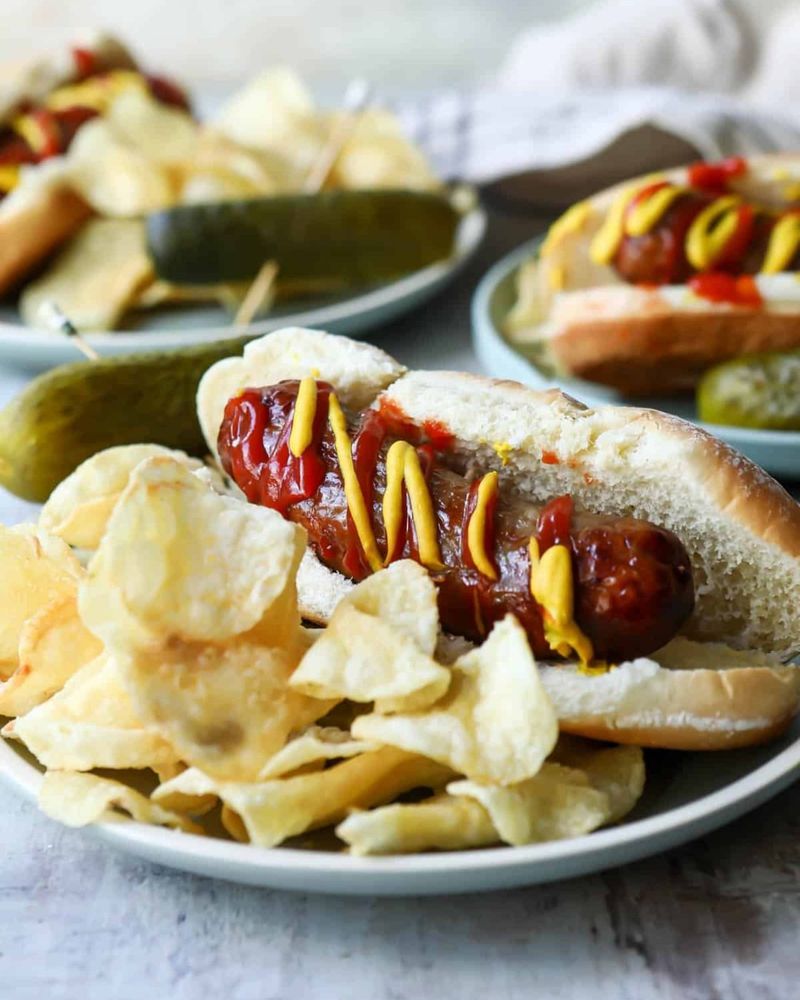
Sous vide cooking might seem fancy for hot dogs, but the results are worth it! Set your immersion circulator to 140°F and seal your hot dogs in a ziplock bag using the water displacement method. Cook for about 30 minutes for perfectly even heating throughout.
The beauty of sous vide is consistency – every hot dog reaches the exact same temperature from edge to center. After sous vide, you can quickly finish them on a hot grill or in a pan for exterior color.
This method is particularly fantastic for large gatherings where you need to prepare many hot dogs. They can stay in the water bath for hours without overcooking, ready to be finished and served whenever your guests are hungry!
7. Boiling
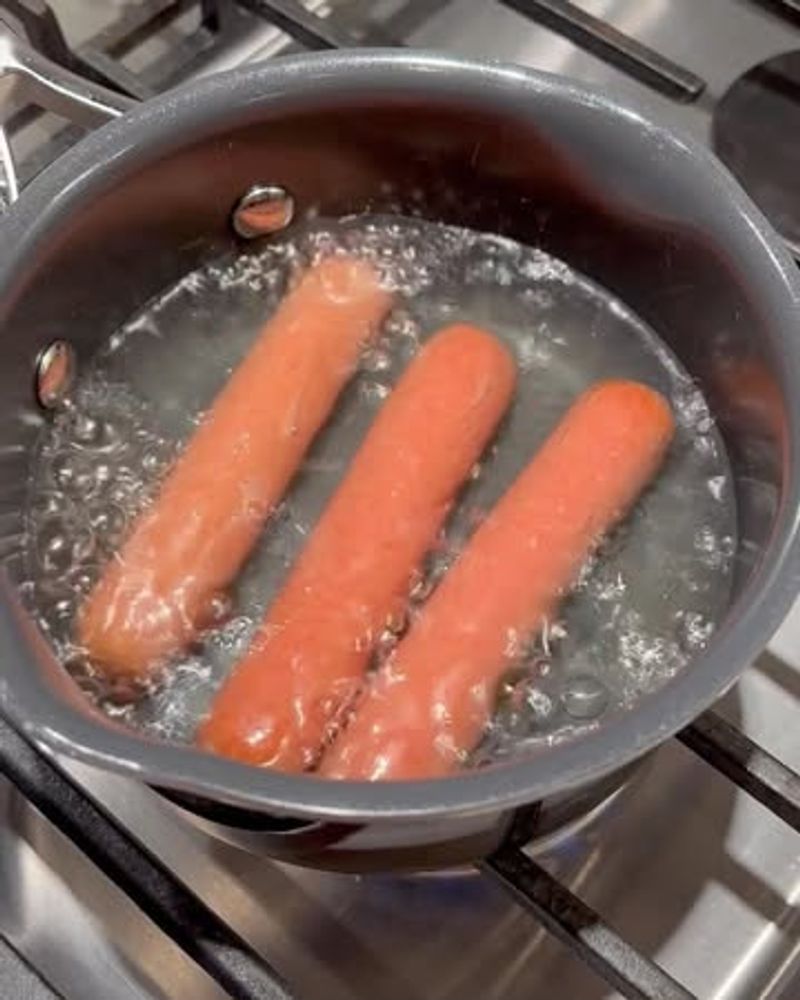
Aggressively boiling hot dogs is perhaps the quickest way to ruin them. When subjected to rolling, bubbling water, hot dogs lose their flavor directly into the cooking liquid. The violent action also causes the casings to split open, releasing even more of the juices and fats that make hot dogs delicious.
The result? Bland, wrinkly, and oddly textured meat that lacks the snap and juiciness we crave. If you’ve ever wondered why some hot dogs taste like nothing but salt, excessive boiling is often the culprit.
Remember: if you must use water, gentle simmering is the way to go. The difference between a 212°F boil and a 170°F simmer might seem small, but your taste buds will definitely notice!
8. Microwaving Without Preparation

Tossing a naked hot dog into the microwave is asking for trouble. Without proper preparation, microwaves heat unevenly, causing hot dogs to explode as steam builds up inside the casing. Even worse, they often end up rubbery on one end and cold in the middle.
The texture becomes oddly tough yet mushy – not the pleasant snap we expect from a properly cooked dog. If you must use a microwave, score the hot dog with small cuts first and wrap it in a damp paper towel.
Better yet, microwave it in a bit of water in a covered dish. This creates steam that heats more evenly. While microwaving will never produce the best results, these small adjustments can make a significant difference in quality.
9. Neglecting Bun Preparation
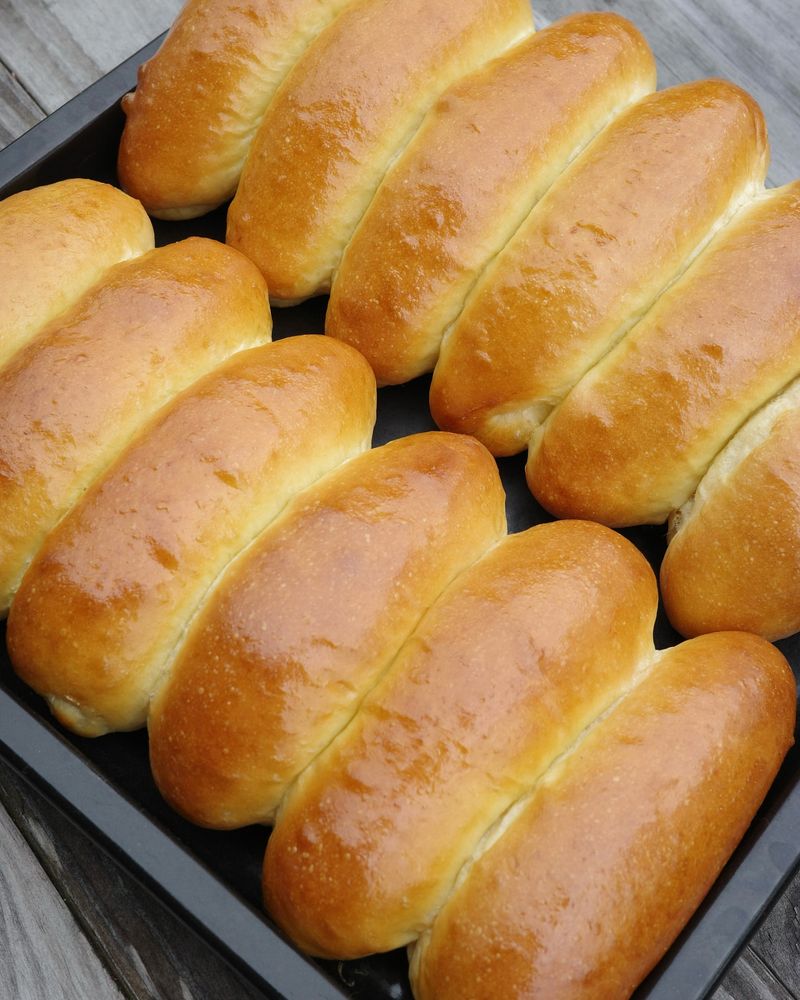
A perfectly cooked hot dog deserves better than a cold, flimsy bun! This common mistake ruins the eating experience before you even take a bite. Cold buns create an unpleasant temperature contrast and often collapse under the weight of toppings.
The solution is simple: toast or steam your buns while your hot dogs finish cooking. For toasting, place them cut-side down on the grill for 10-15 seconds or butter them lightly before toasting in a pan.
For steaming, wrap them in a damp paper towel and microwave for 10 seconds, or place them above your simmering hot dogs. The warm, slightly crisp bun creates the perfect vessel for your perfectly cooked hot dog and prevents soggy disappointment.
10. Cutting Before Cooking
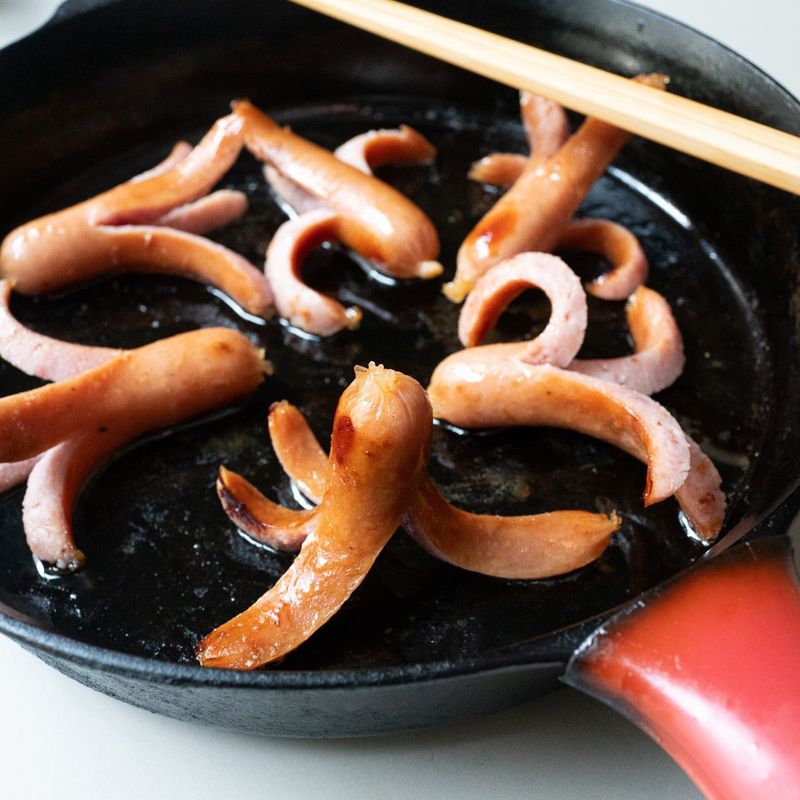
Slicing hot dogs before cooking seems innocent enough – maybe you’re creating cute octopus shapes for kids or trying to speed up cooking time. Unfortunately, this common practice releases the precious juices that make hot dogs flavorful and moist.
As soon as you cut into a raw hot dog, those flavorful fats and juices have an escape route. During cooking, they’ll leak out, leaving you with a dry, less flavorful result. The exception is spiral cutting, which creates shallow cuts that expand during cooking without fully penetrating the dog.
If you need to cut your hot dogs, do it after cooking when the proteins have set and can better retain their moisture. Your patience will be rewarded with juicier, more flavorful results!
11. Cooking at Extreme Temperatures
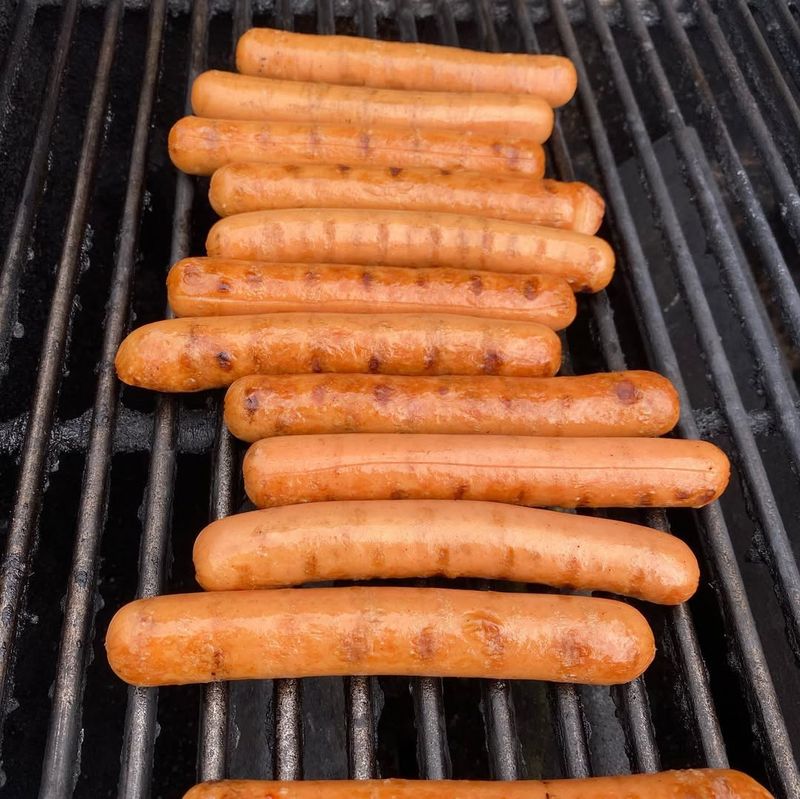
Blasting hot dogs with excessive heat is a guaranteed path to disappointment. When exposed to extremely high temperatures, the outside burns before the inside warms through, creating an unappetizing combination of charred exterior and cold center.
High heat also causes the casing to burst open explosively, creating splits that release all those delicious juices. The fat renders out too quickly, leaving behind a dry, tough hot dog that’s a shadow of what it could have been.
Medium heat is your friend when cooking hot dogs – it allows for even cooking from edge to center while developing that perfect light char or browning. Patience pays off with perfectly cooked dogs that maintain their juicy integrity!
Leave a comment